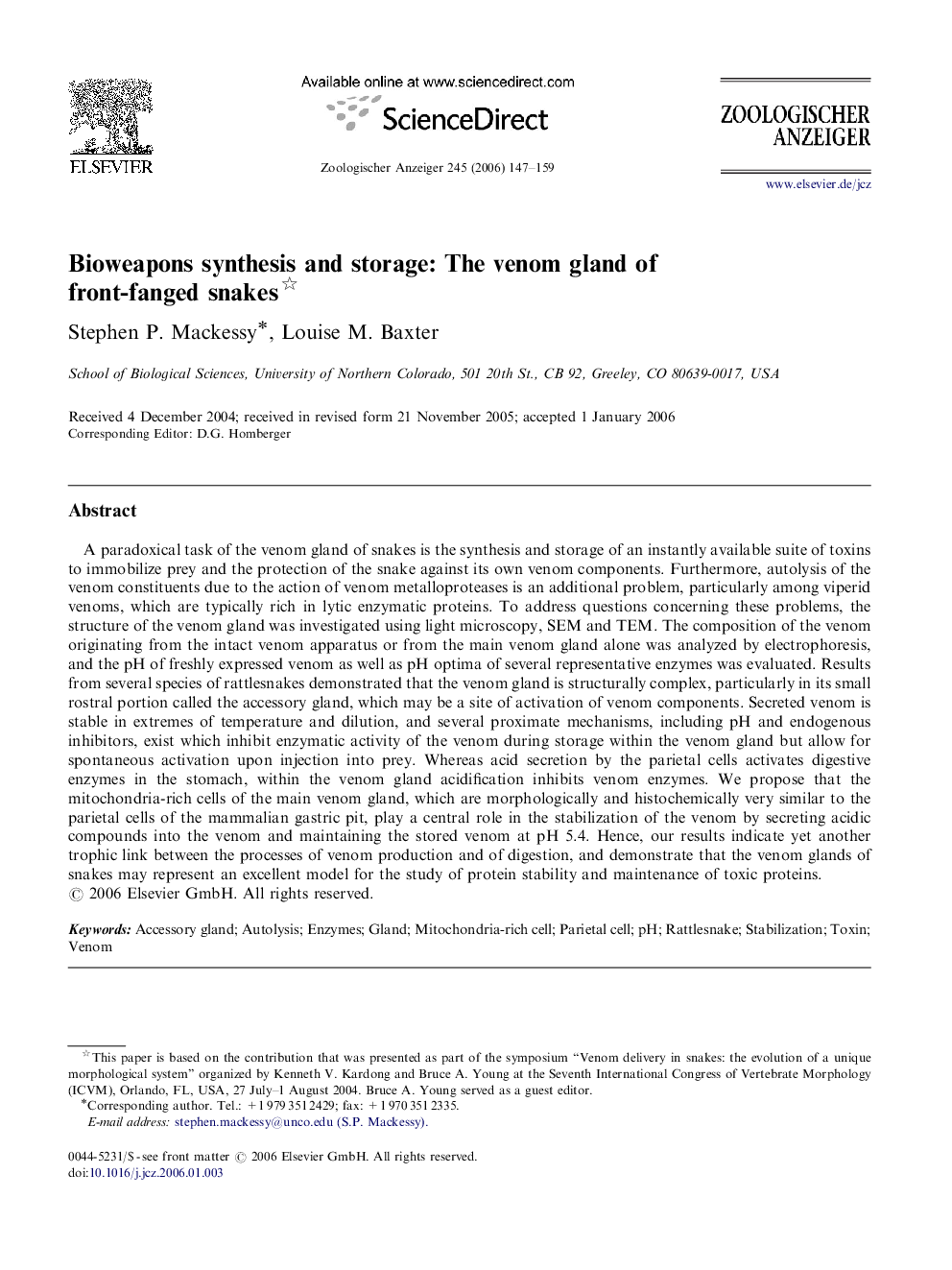| کد مقاله | کد نشریه | سال انتشار | مقاله انگلیسی | نسخه تمام متن |
|---|---|---|---|---|
| 2790946 | 1568624 | 2006 | 13 صفحه PDF | دانلود رایگان |

A paradoxical task of the venom gland of snakes is the synthesis and storage of an instantly available suite of toxins to immobilize prey and the protection of the snake against its own venom components. Furthermore, autolysis of the venom constituents due to the action of venom metalloproteases is an additional problem, particularly among viperid venoms, which are typically rich in lytic enzymatic proteins. To address questions concerning these problems, the structure of the venom gland was investigated using light microscopy, SEM and TEM. The composition of the venom originating from the intact venom apparatus or from the main venom gland alone was analyzed by electrophoresis, and the pH of freshly expressed venom as well as pH optima of several representative enzymes was evaluated. Results from several species of rattlesnakes demonstrated that the venom gland is structurally complex, particularly in its small rostral portion called the accessory gland, which may be a site of activation of venom components. Secreted venom is stable in extremes of temperature and dilution, and several proximate mechanisms, including pH and endogenous inhibitors, exist which inhibit enzymatic activity of the venom during storage within the venom gland but allow for spontaneous activation upon injection into prey. Whereas acid secretion by the parietal cells activates digestive enzymes in the stomach, within the venom gland acidification inhibits venom enzymes. We propose that the mitochondria-rich cells of the main venom gland, which are morphologically and histochemically very similar to the parietal cells of the mammalian gastric pit, play a central role in the stabilization of the venom by secreting acidic compounds into the venom and maintaining the stored venom at pH 5.4. Hence, our results indicate yet another trophic link between the processes of venom production and of digestion, and demonstrate that the venom glands of snakes may represent an excellent model for the study of protein stability and maintenance of toxic proteins.
Journal: Zoologischer Anzeiger - A Journal of Comparative Zoology - Volume 245, Issues 3–4, 24 November 2006, Pages 147–159